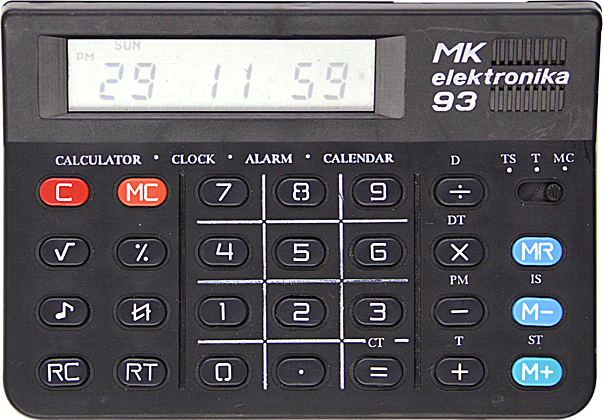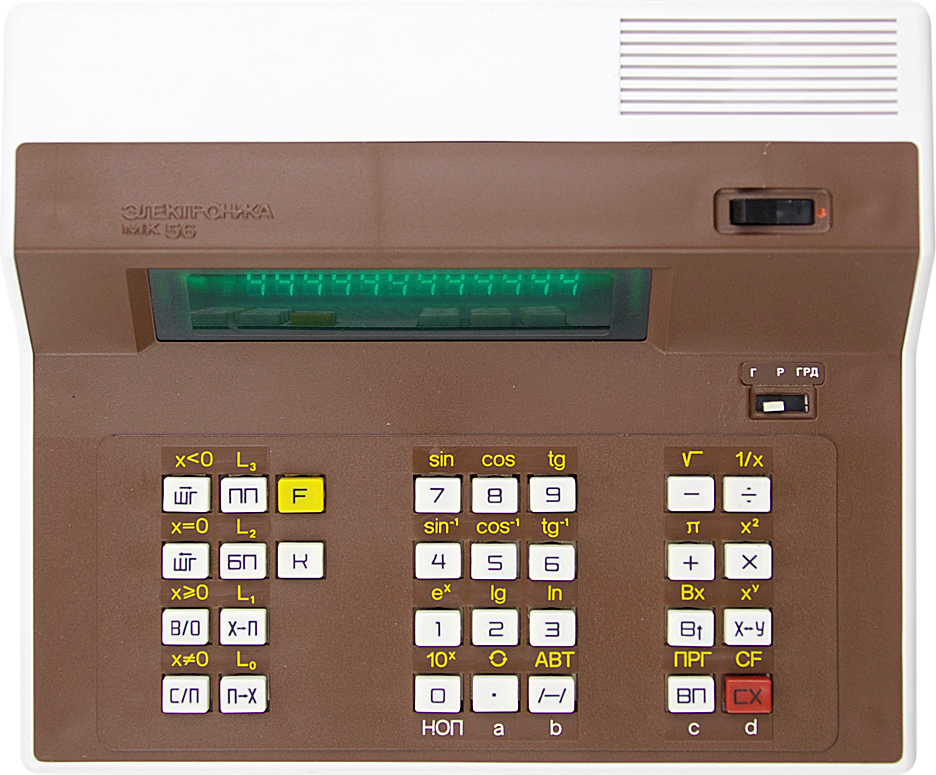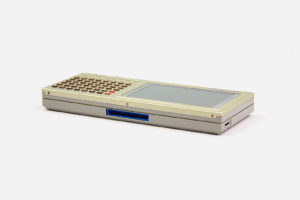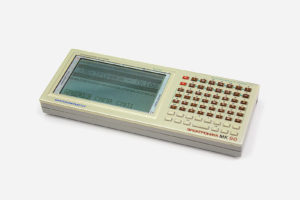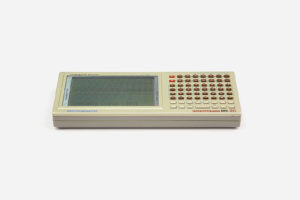
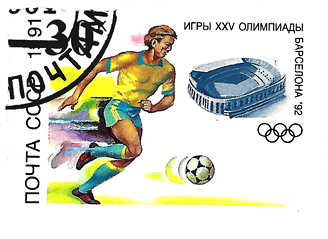
— usable as a data unit with a range of user-created programmes stored in a dedicated removable memory module;
— BASIC programmes input and debugging;
— tools for creating graphs, tables, diagrams and charts which could be viewed on a large 120×64 pixel LCD screen;
— text editing and sound control.
Although its functions were comparable to a desktop computer, the MK-90 could fit in the palm of one’s hand and was portable enough to be carried with you easily. The programmes in the removable memory module could be stored for up to 18 months after installing the batteries. The calculator also offered a range of popular games, including Tetris, Pacman, Snake, and Chess.
Electronics enthusiasts in those days fashioned their own device programmers to connect the MK-90 to a PC.
The keyboard layout was somewhat awkward, with its Cyrillic letters arranged in alphabetical order and then transliterated with Latin letters. BASIC commands could be entered using a special transparent overlay with the command names.
The Elektronika MK-90 also came with the docking station from the MK-92, a four-colour plotter, and an output for connecting a tape recorder for recording information onto a magnetic tape.
The device instruction set was also compatible with the Elektronika-60 computer.
The MK-90 ran on four 0.45 sealed cylindrical NiCd batteries or A-316 Quantum batteries (predecessors of today’s AA batteries). The device came with a D2-37B line adapter and a ZU-1 charger. One set of batteries lasted for at least 5 hours in programme execution mode and 15 hours in typing and editing mode.
Sources: user manual, http://red-innovations.su/index/photos_de/mk90.html, http://www.phantom.sannata.ru/konkurs/2008/kt0831.shtml
Weight: 550 g or less
Dimensions: 255×100×33.5mm
